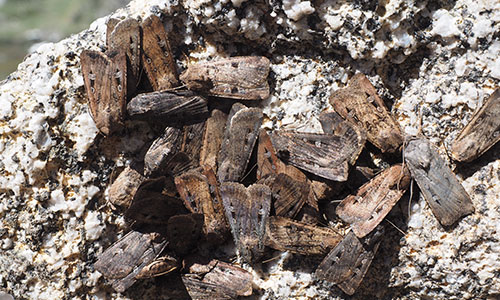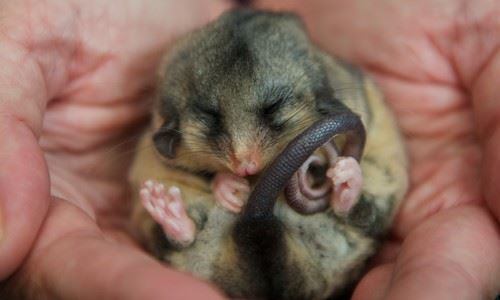A call for lights off to save a species
Australians are being asked to turn their outside lights off to save one of the nation’s most adorable, but critically endangered species - the Mountain Pygmy-possum.
The country’s only hibernating marsupial is at risk of starvation after its main food source, the migrating Bogong Moth, failed to appear in the possums’ Victorian Alps home for the second year in a row.

Now, on the eve of the moth’s spring migration, Zoos Victoria is calling on south-eastern Australians along the flight path of the Bogong Moth to turn off any unnecessary outdoor lighting that may be interrupting the moths from their traditional migration.
Commencing September 1, Lights Off for Moths is a very public attempt to avert a crisis for the 2,000 remaining Mountain Pygmy-possums in the wild.
Bogong Moths have migrated from their winter breeding grounds throughout Queensland, New South Wales and western Victoria, to the Victorian Alpine region, for more than 7,000 years - a known ecological phenomenon.
However, in the spring of 2017 and 2018, moth numbers crashed from around 4.4 billion in alpine areas to an almost undetectable number of individuals.
Zoos Victoria CEO Dr Jenny Gray said that, as a result, 2018 was the worst spring on record for Mountain Pygmy-Possums, with an unprecedented amount of litter loss in females.
“Females lost their young last spring, with a large proportion carrying dead joeys in their pouches. In the worst-impacted population, 95 per cent of females we surveyed lost their young,” Dr Gray said.
“We talk of the butterfly effect, where a small action in one place grows into a disaster in another. The lack of flutter of moth wings may well herald the doom of a cute, fluffy, hibernating possum half a continent away. It’s critical that we take action this spring.”
"The lack of flutter of moth wings may well herald the doom of a cute, fluffy, hibernating possum half a continent away." - Dr Jenny Gray
Not much is known about why the moths are not making it to their summer alpine destination.
However, it is thought that as moths use both the Earth’s magnetic field and visual cues on the horizon to navigate their way, light pollution from urban centres can ‘trap’ the moths and hinder them from continuing their journey.
Some of the greatest beacons are Parliament House and Canberra’s bright surrounds.
Both parliamentarians and the public are being asked to support Lights Off for Moths campaign, from September 1 to October 31.
Zoos Victoria is also creating a new citizen science platform, Moth Tracker, which will launch mid-September, to empower anyone, anywhere to record a Bogong Moth sighting.

Moth Tracker will enable Zoos Victoria to bridge existing knowledge gaps around Bogong Moth numbers and migration.
It will also assist the Recovery Team by giving early warning of the success or failure of the 2019 migration.
The Mountain Pygmy-possum Recovery Team, together with supporting organisations, is also working hard to implement interventions in the wild.
These may include supplementary feeding, improving habitat connectivity and captive measures to support populations through the breeding season.
"We’re relying on the public’s action to help us support migration and accurately ascertain the true numbers of migrating moths so we can help save this precious Mountain Pygmy-Possum,” Dr Gray said.
